Published
- 11 min read
Best AWS Elastic Beanstalk Alternatives in 2025
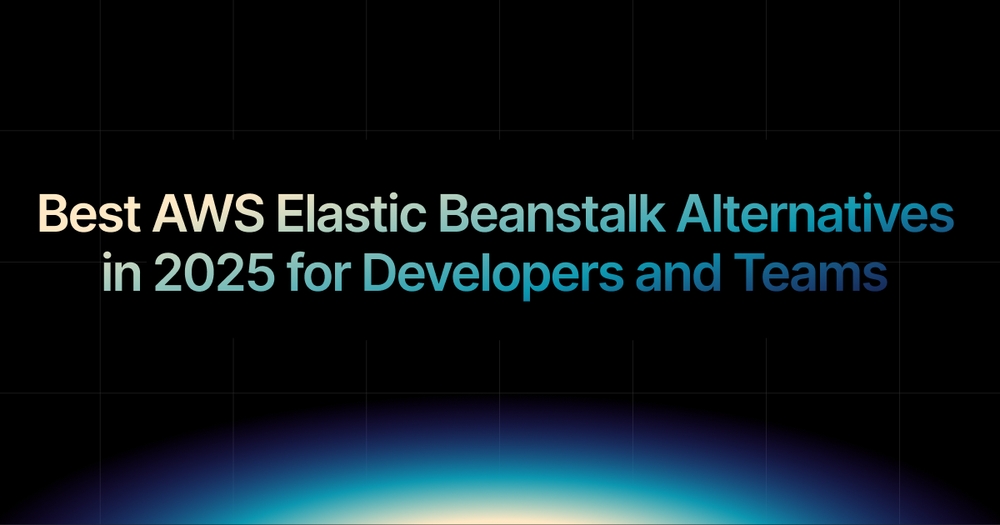
Introduction
For years, AWS Elastic Beanstalk has been a go-to platform for developers who want to deploy applications quickly without managing infrastructure. It automates provisioning, load balancing, and scaling, allowing teams to focus more on code and less on setup.
However, as cloud applications become more complex, many teams find Beanstalk limited in flexibility and cost transparency. Managing environments, configuring scaling, and monitoring workloads can still require deep AWS expertise.
That is why developers in 2025 are exploring Elastic Beanstalk alternatives that combine automation, cost efficiency, and simplicity and that is where Kuberns stands out. Built on AWS infrastructure, Kuberns automates deployment, scaling, and monitoring with an AI-powered platform that helps teams save up to 40 percent on cloud costs.
Why Look for an Elastic Beanstalk Alternative?
While AWS Elastic Beanstalk simplifies deployment, it comes with several challenges that become more noticeable as projects scale:
- Complex configurations: Advanced setups still require AWS console navigation and manual tuning.
- Limited observability: Built-in monitoring tools are basic compared to modern platforms.
- Scaling constraints: Auto scaling can be slow or inconsistent for dynamic workloads.
- Unpredictable costs: Infrastructure costs can rise quickly without clear insight into usage.
- DevOps dependency: Custom environments often require dedicated DevOps management.
Platforms like Kuberns remove these pain points by offering AI-based automation, better cost control, and simplified full-stack deployment across environments.
1. Kuberns: The Smarter Elastic Beanstalk Alternative
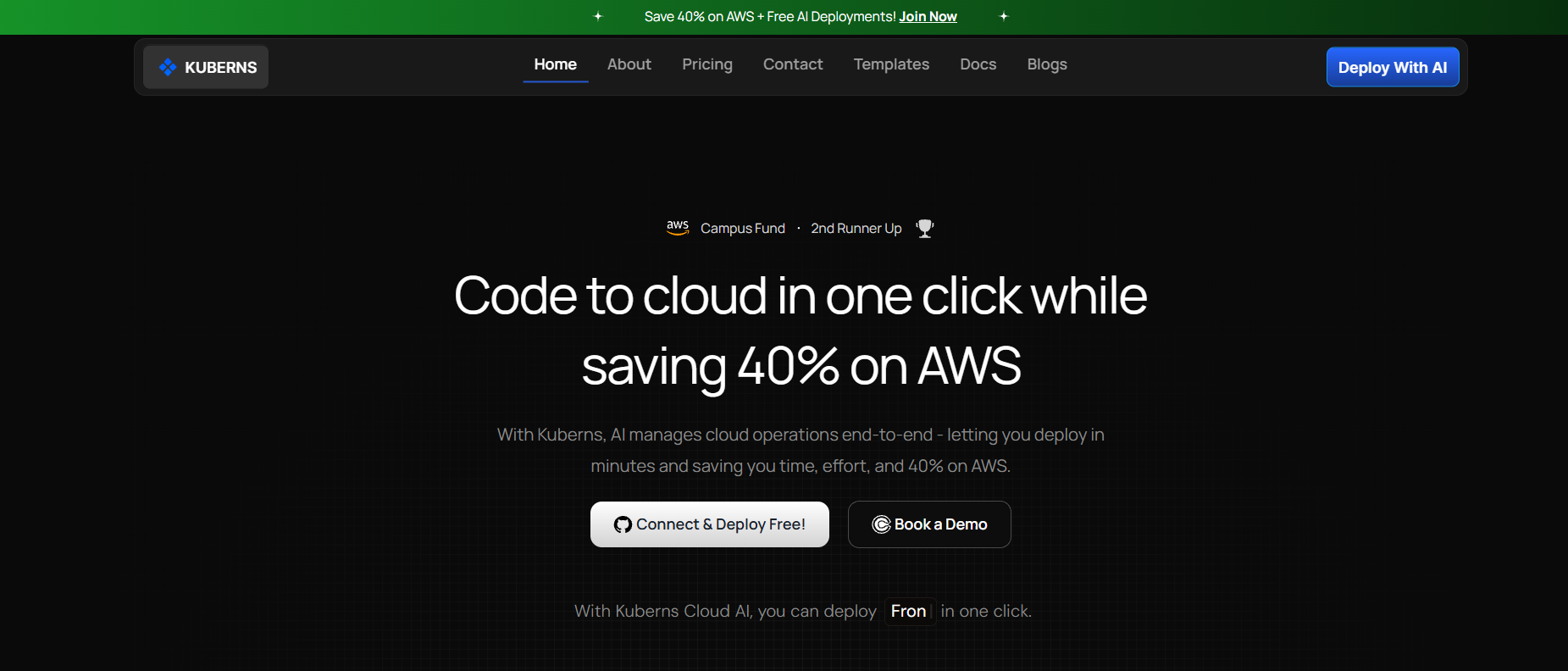 Kuberns is an AI-powered deployment platform built on AWS infrastructure. It delivers the reliability of AWS with the simplicity of one-click deployment and intelligent scaling.
Kuberns is an AI-powered deployment platform built on AWS infrastructure. It delivers the reliability of AWS with the simplicity of one-click deployment and intelligent scaling.
Key Highlights
- Full-stack support: Deploy frontend, backend, and containerized apps directly from Git.
- AI-driven automation: Handles provisioning, scaling, and monitoring automatically.
- Up to 40 percent AWS cost savings: Reduces infrastructure spend without sacrificing performance.
- Unified observability: Real-time logs, performance metrics, and alerts in one dashboard.
- Zero DevOps complexity: No need to manage EC2 instances, load balancers, or scaling groups manually.
Kuberns makes deployment faster, smarter, and more cost-efficient for teams of any size.
Read more in The Simplest Way to Build, Deploy, and Scale Full-Stack Apps and Cut AWS Bills by 40% Without Compromising on Security or Features.
2. Render
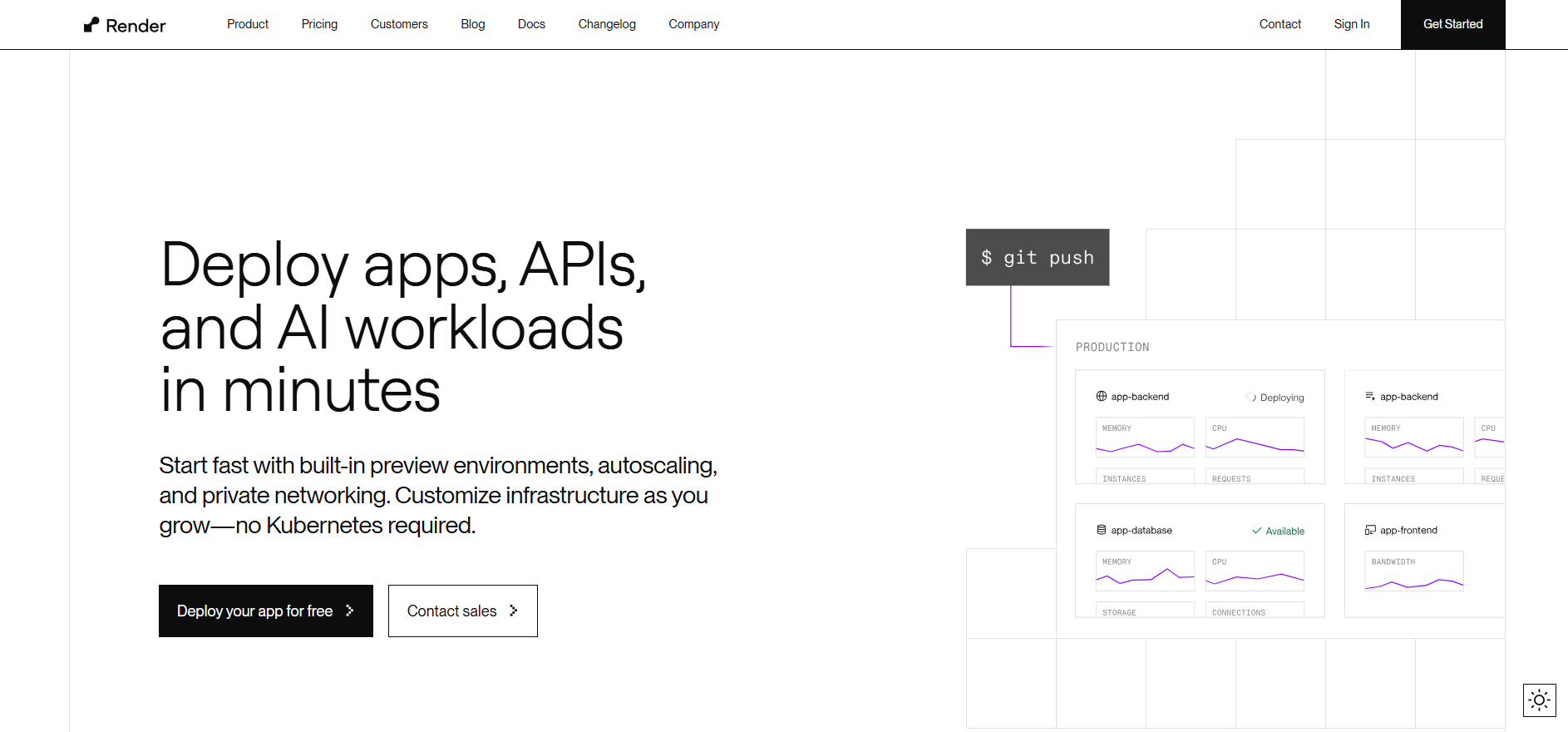 Render simplifies full-stack hosting with automatic deployments from Git, support for databases, background workers, and Docker-based applications.
Render simplifies full-stack hosting with automatic deployments from Git, support for databases, background workers, and Docker-based applications.
Best For: Developers building web applications or APIs that need straightforward setup and fast scaling. Limitations: Render’s scaling and monitoring features are limited compared to Kuberns, which provides deeper visibility and AI optimization for large workloads.
Read more in Render vs Kuberns.
3. DigitalOcean App Platform
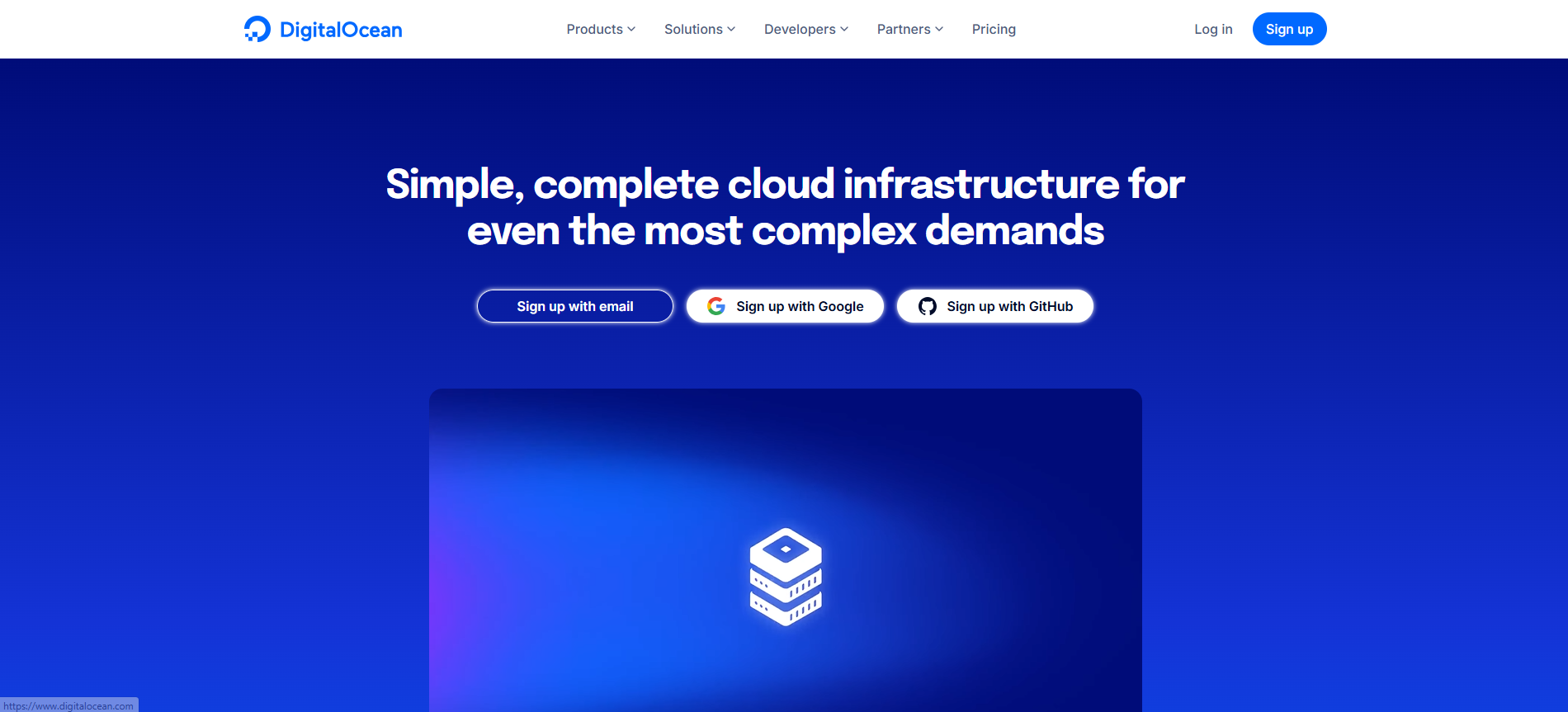 DigitalOcean App Platform offers simplicity and predictable pricing, making it ideal for small teams and startups. It supports web apps, APIs, and Docker deployments.
DigitalOcean App Platform offers simplicity and predictable pricing, making it ideal for small teams and startups. It supports web apps, APIs, and Docker deployments.
Best For: Teams seeking flat-rate pricing and easy scalability. Limitations: While beginner-friendly, it lacks intelligent automation and advanced monitoring. Kuberns provides similar simplicity with AI-powered scaling and AWS-grade performance.
Check out Best DigitalOcean Alternatives for Startups and Solo Developers.
4. Vercel
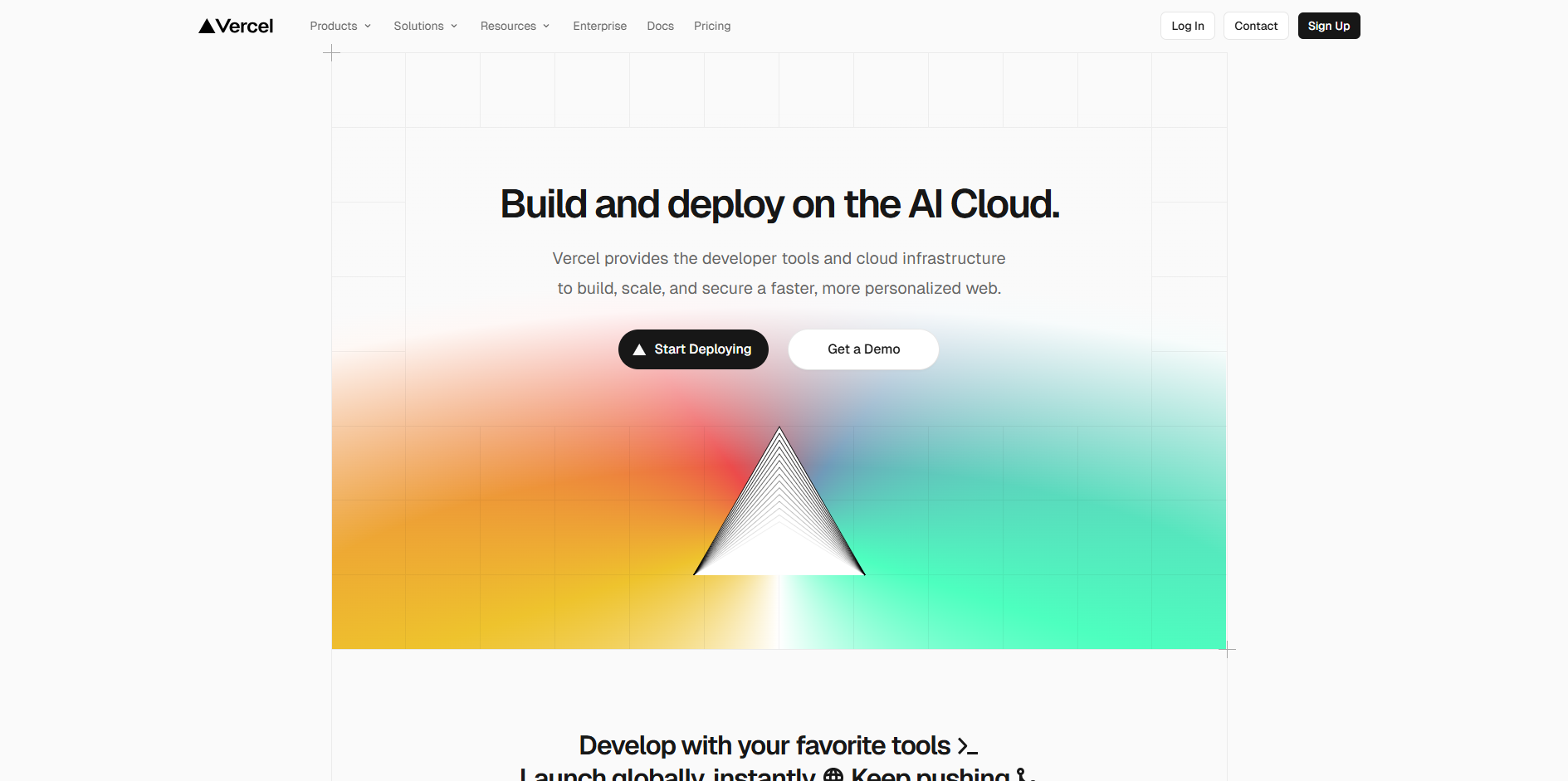 Vercel is widely used for frontend applications built with React and Next.js. It delivers fast global performance through edge caching and automated serverless deployments.
Vercel is widely used for frontend applications built with React and Next.js. It delivers fast global performance through edge caching and automated serverless deployments.
Best For: Frontend developers and teams building high-performance web interfaces. Limitations: Vercel lacks backend and containerized application support. Teams that need full-stack flexibility can use Kuberns to deploy frontend and backend apps together in one dashboard.
Learn more in Vercel vs Kuberns.
5. Azure App Services
 Azure App Services is a Microsoft-based alternative that offers robust web app hosting and integration with the Azure DevOps ecosystem.
Azure App Services is a Microsoft-based alternative that offers robust web app hosting and integration with the Azure DevOps ecosystem.
Best For: Enterprises already using Microsoft technologies. Limitations: Setup and management are complex for small teams. In contrast, Kuberns provides AWS-level reliability, faster deployment, and simplified scaling with no DevOps overhead.
Read more in Azure Alternatives in 2025.
6. Google Cloud Run
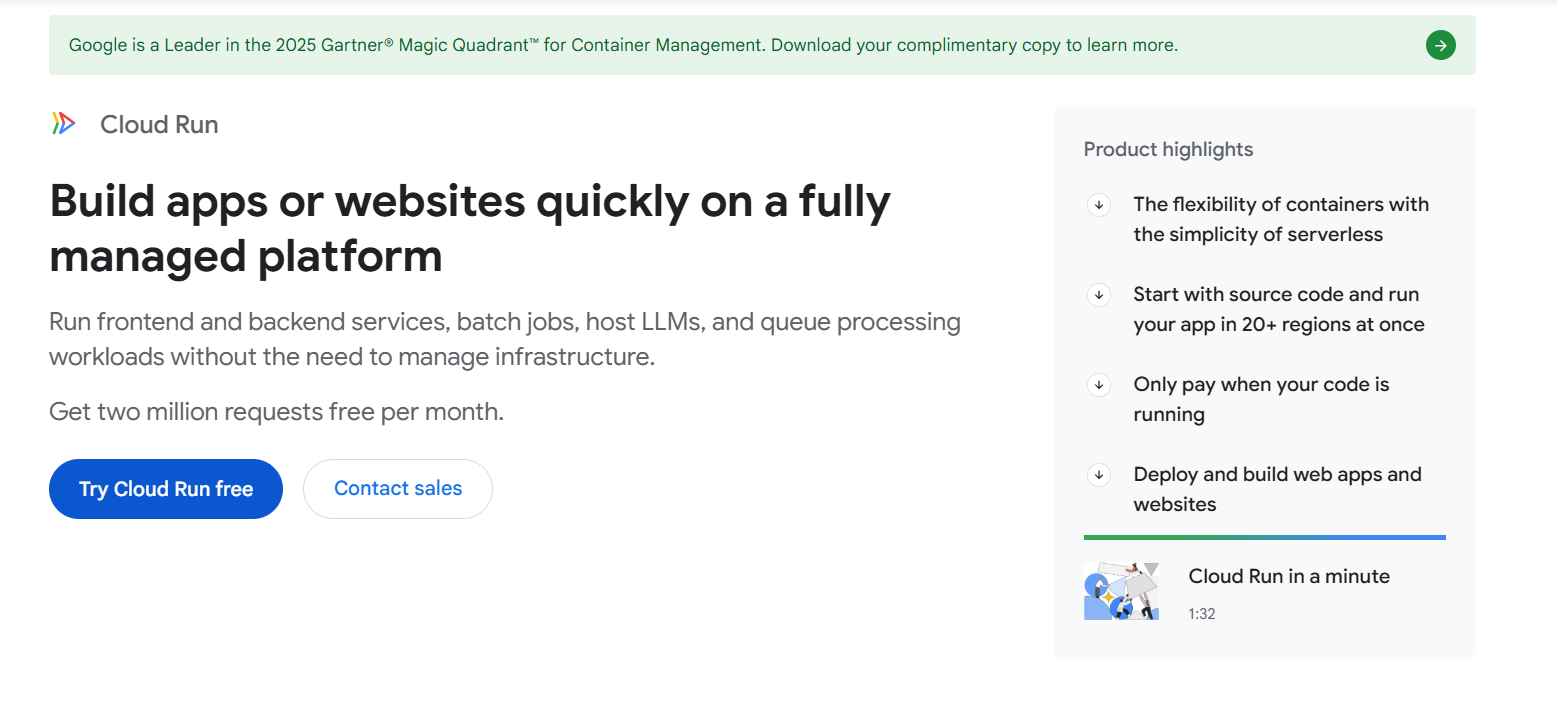 Google Cloud Run provides a serverless environment for running containerized applications. It automatically scales workloads based on incoming traffic and integrates with Google Cloud Build for CI/CD.
Google Cloud Run provides a serverless environment for running containerized applications. It automatically scales workloads based on incoming traffic and integrates with Google Cloud Build for CI/CD.
Best For: Developers working with microservices or container-based architectures. Limitations: Limited control over infrastructure and complex pricing for high-scale workloads. Kuberns offers similar scalability on AWS with simpler cost management and built-in automation.
Explore Google Cloud Alternatives.
Comparison Table: Best AWS Elastic Beanstalk Alternatives
| Platform | Key Features | Ideal For | Limitation |
|---|---|---|---|
| Kuberns | AI-powered deployment, unified dashboard, real-time monitoring, up to 40% AWS cost savings | Developers and enterprises needing AWS reliability and automation | Focused on automation over granular manual control |
| Render | Full-stack hosting, Git-based CI/CD, support for databases and background workers | Developers building APIs and microservices | Limited automation and performance insights |
| DigitalOcean App Platform | Flat pricing, full-stack hosting, Docker support, auto-deploy from Git | Startups and small teams wanting simple, predictable hosting | Limited advanced scaling and monitoring |
| Vercel | Serverless deployment, edge caching, frontend framework integration (Next.js/React) | Frontend and SaaS teams focused on performance | No native backend or containerized support |
| Azure App Services | Enterprise-grade hosting, hybrid cloud, integration with Microsoft ecosystem | Enterprises already using Azure tools | Steeper learning curve for smaller teams |
| Google Cloud Run | Serverless containers, auto-scaling, deep integration with Google Cloud tools | Developers using containerized microservices | Complex billing and limited control |
Why Kuberns Is the Right Choice
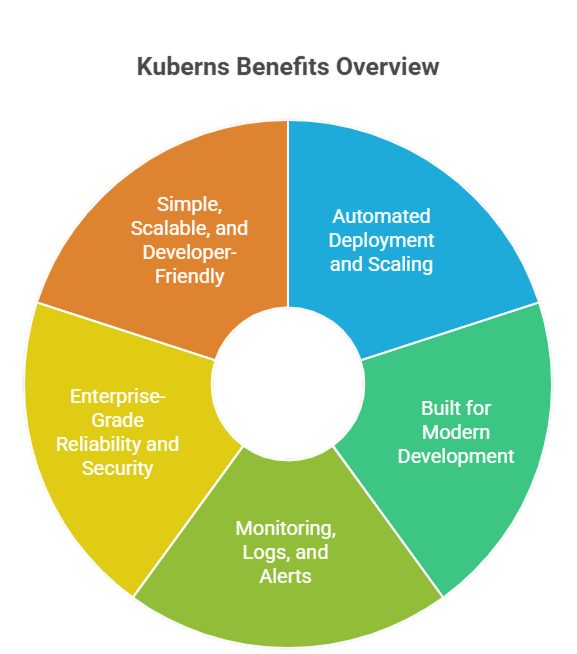 Kuberns eliminates the complexity of managing AWS Elastic Beanstalk environments. It provides AI automation that takes care of deployment, scaling, and optimization while keeping costs predictable and infrastructure secure.
Kuberns eliminates the complexity of managing AWS Elastic Beanstalk environments. It provides AI automation that takes care of deployment, scaling, and optimization while keeping costs predictable and infrastructure secure.
- One-click Git deployments for frontend, backend, and containers.
- AI-powered automation that scales intelligently based on usage.
- Built-in monitoring and logging for complete visibility.
- Up to 40% cost savings on AWS infrastructure.
Kuberns gives teams the flexibility of AWS with the simplicity of a managed platform.
Final Thoughts
AWS Elastic Beanstalk played a major role in simplifying application deployment on AWS, but as the cloud ecosystem evolved, so did developer expectations. In 2025, teams need platforms that not only automate deployment but also handle cost optimization, monitoring, and scaling intelligently.
That is where Kuberns comes in. Built on AWS infrastructure, it extends the simplicity that Beanstalk introduced by adding AI-driven automation, real-time monitoring, and unified management. Whether you are deploying a full-stack web app, an API, or containerized microservices, Kuberns handles provisioning, scaling, and performance optimization automatically.
By combining AWS reliability, AI-powered efficiency, and up to 40 percent cost savings, Kuberns gives teams the control and visibility they need without the complexity of managing multiple tools or services.
If your goal is to deploy faster, scale smarter, and simplify infrastructure management, Kuberns is the modern choice for your next cloud project.
Frequently Asked Questions (FAQ’s)
1. What is AWS Elastic Beanstalk used for?
AWS Elastic Beanstalk is a Platform-as-a-Service (PaaS) that automates the deployment, scaling, and management of web applications. It helps developers run applications on AWS infrastructure without manually handling servers or load balancers.
2. Why look for an AWS Elastic Beanstalk alternative?
Developers often look for Elastic Beanstalk alternatives due to complex configuration, limited automation, and unpredictable pricing. Many teams now prefer platforms like Kuberns that provide AI-powered deployment, simplified scaling, and better cost visibility.
3. What is the best AWS Elastic Beanstalk alternative in 2025?
Kuberns is one of the best Elastic Beanstalk alternatives in 2025. It combines AWS reliability with AI-driven automation, enabling one-click deployment, real-time monitoring, and up to 40 percent AWS cost savings.
4. How does Kuberns differ from AWS Elastic Beanstalk?
Kuberns removes the complexity of managing environments and scaling policies. It automates provisioning, scaling, and monitoring through AI, providing teams with unified visibility and lower operational overhead compared to Beanstalk.
5. Does Kuberns run on AWS infrastructure?
Yes. Kuberns runs entirely on AWS infrastructure. It inherits AWS-grade reliability, uptime, and global performance while providing an intelligent automation layer that handles scaling and monitoring for you.
6. Is Kuberns suitable for enterprises as well as startups?
Absolutely. Kuberns is designed for both startups and large enterprises. It supports full-stack apps, APIs, and containerized workloads, making it flexible for any organization that values automation and cost efficiency.
7. What are the main limitations of AWS Elastic Beanstalk?
Elastic Beanstalk simplifies basic deployments, but it can be restrictive for modern workloads. It lacks deep automation, advanced observability, and predictable billing models for complex applications.
8. Can Kuberns handle both frontend and backend deployments?
Yes. Kuberns supports frontend frameworks, backend APIs, and containerized microservices in a single unified workflow. Developers can deploy directly from Git and manage everything through one dashboard.
9. How much can I save by using Kuberns instead of Elastic Beanstalk?
Teams using Kuberns typically save up to 40 percent on AWS infrastructure costs due to intelligent resource optimization and automated scaling.
10. How can I migrate from AWS Elastic Beanstalk to Kuberns?
Migrating from Beanstalk to Kuberns is straightforward. You can connect your existing Git repository, configure your environment, and deploy in one click. Kuberns automatically provisions resources and optimizes scaling behind the scenes.